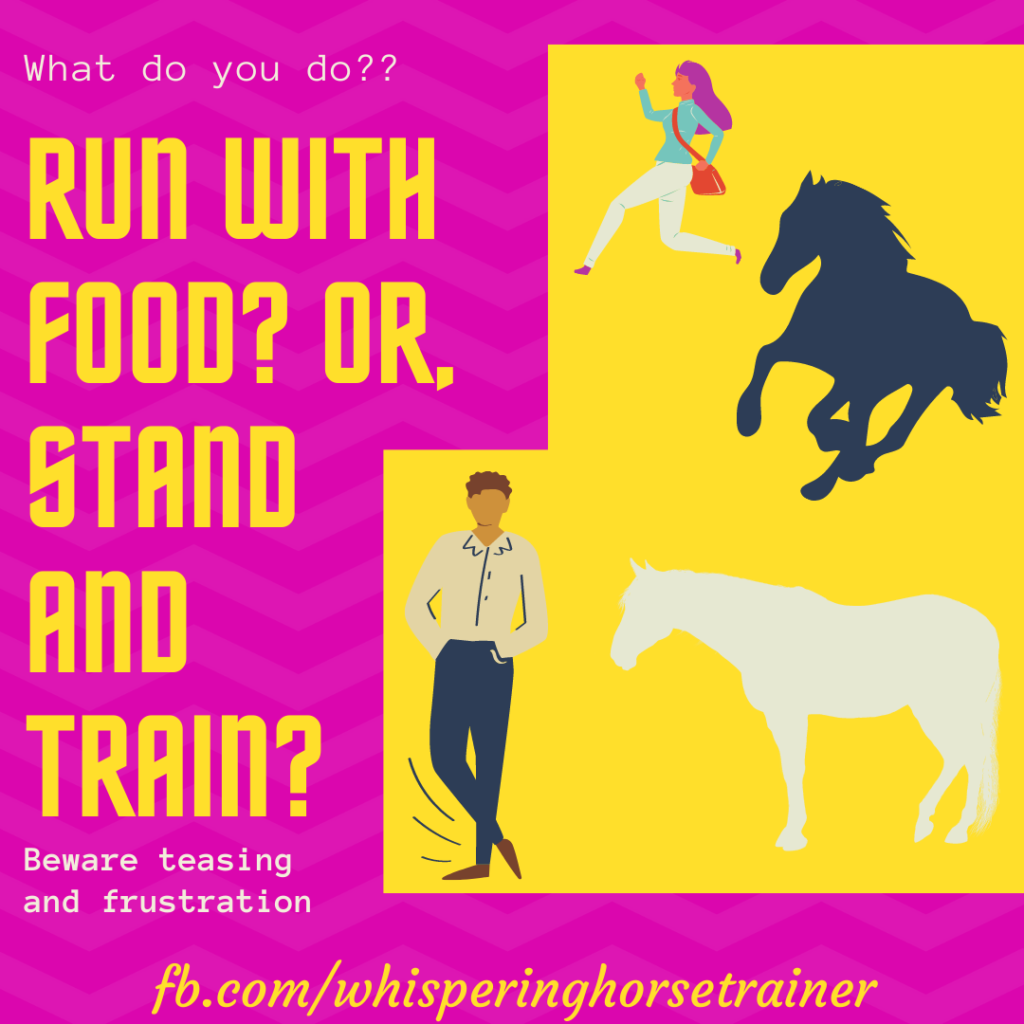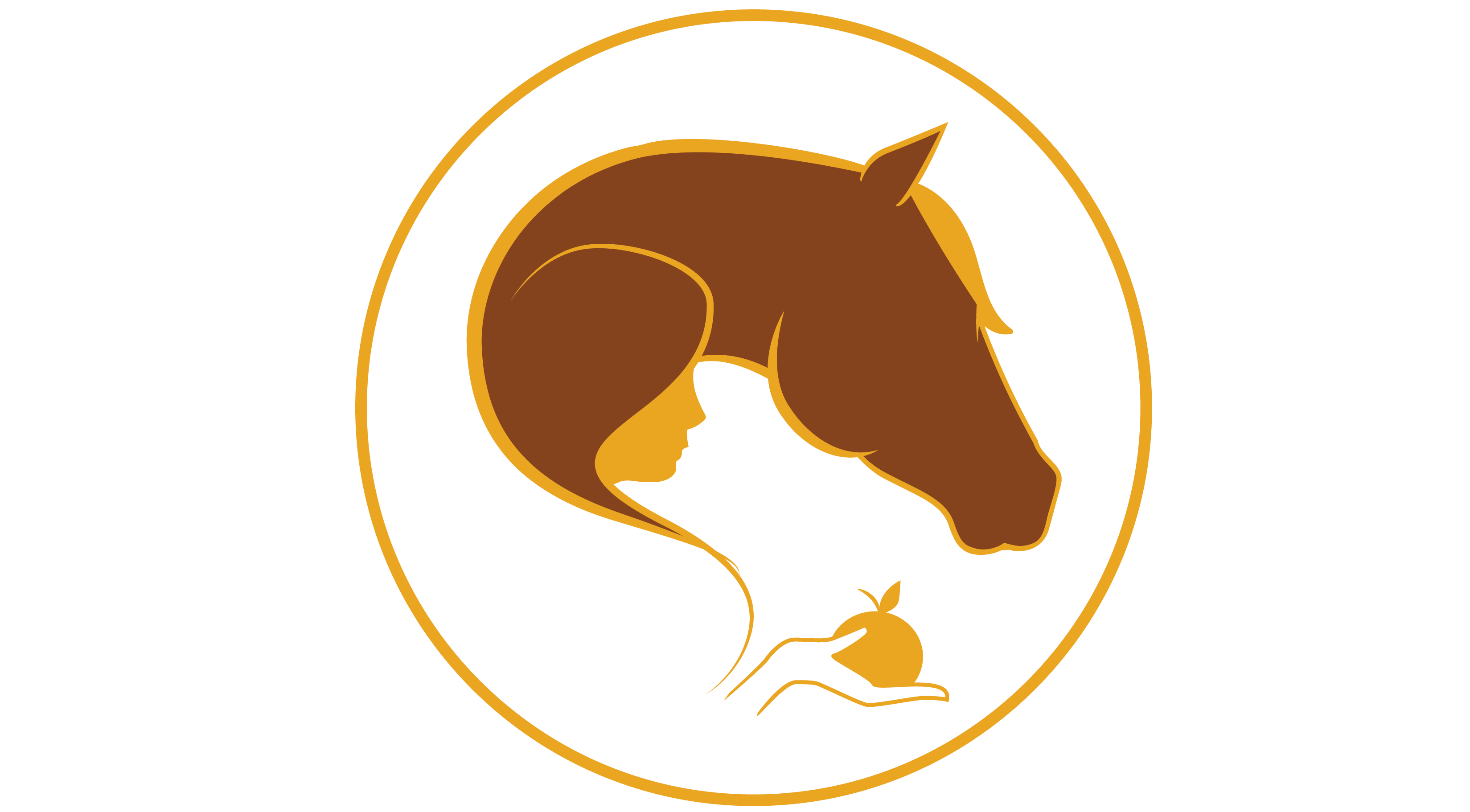Run with Food? OR Stand and Train?

One thing that I really love about R+ training is shaping behaviour and putting it on cue and playing around with cues.
I’d encourage all of you to develop your shaping skills, allowing the horse to offer behaviour and most importantly, get those behaviours on cue.
All my horses and donkeys were trained (shaped) to walk on a cue, no gear, all at liberty, no targets and grass is no problem either and then I match their footsteps. In this way, it is a built in start button, because if they don’t move off or are slow to do so, I know there’s a problem. If I’m ahead of them and luring them with the food, I take away choice and autonomy and I also lose valuable information if they are slow to react. The time between a cue and the behaviour being performed is called latency. The slower they are to do the behaviour after the cue, the higher the latency, which is really valuable information to us. What is preventing or punishing them performing the behaviour? ie. high latency.
Can we just stand there and cue our horse to walk or run?
If we can definitely say that we simply stand there and cue our horse to walk and they walk off, we know it was trained and on cue. Our horse understands the behaviour and the consequence is food at the end.
Predictability and understanding how to gain the food (what is the contingency) is what makes it fun. Not knowing and having to follow, to chase and even run, is not fun.
Training and clear contingencies for the horse ie. when I do this, that happens (food is given) is what prevents frustration and confusion in the horse.
But if we start walking or running (away from the horse) and the horse follows or chases us, do they understand the behaviour? Or are they just chasing the food that’s moving away from them? Are we just luring them with food?
It’s also important to look at the body language of the horse. Do they look soft in their face? Move with decisiveness and focus because they understand how to gain the positive reinforcement? Does their whole body look soft and relaxed? Do they nicker with enjoyment? Lick their lips in anticipation of the food, not out of tension?
Or do they flick their head, pin their ears? Does their whole face and body look tense? Do they trot, canter, rear and even buck? Do they look like they’re truly having fun?
It’s easy to walk around with a food pouch and your horse follows you around. It takes a lot of good observation, knowledge, timing and skill to shape behaviour without discomfort to the horse and then put it on cue.
This video is a good example of how I have previously shaped the behaviour of walking and trotting using the reverse round pen and now I am then adding the cue for the trot. It would be easy to think she is trotting because I am giving the cue, but that’s not what is happening. When the trot behaviour is offered consistently, then I add the cue. Timing is super important. I need to say the cue the moment she looks like she is committed to trotting, so she makes the association. If I say it too soon, it won’t have relevance and could actually interrupt her wanting to trot and saying it too late won’t be relevant either. The verbal cue is the word “faster” drawn out a little to give her time to fully transition into the trot.

